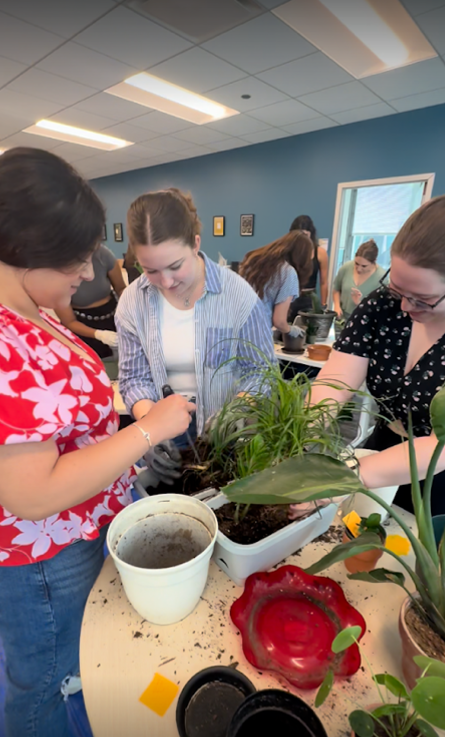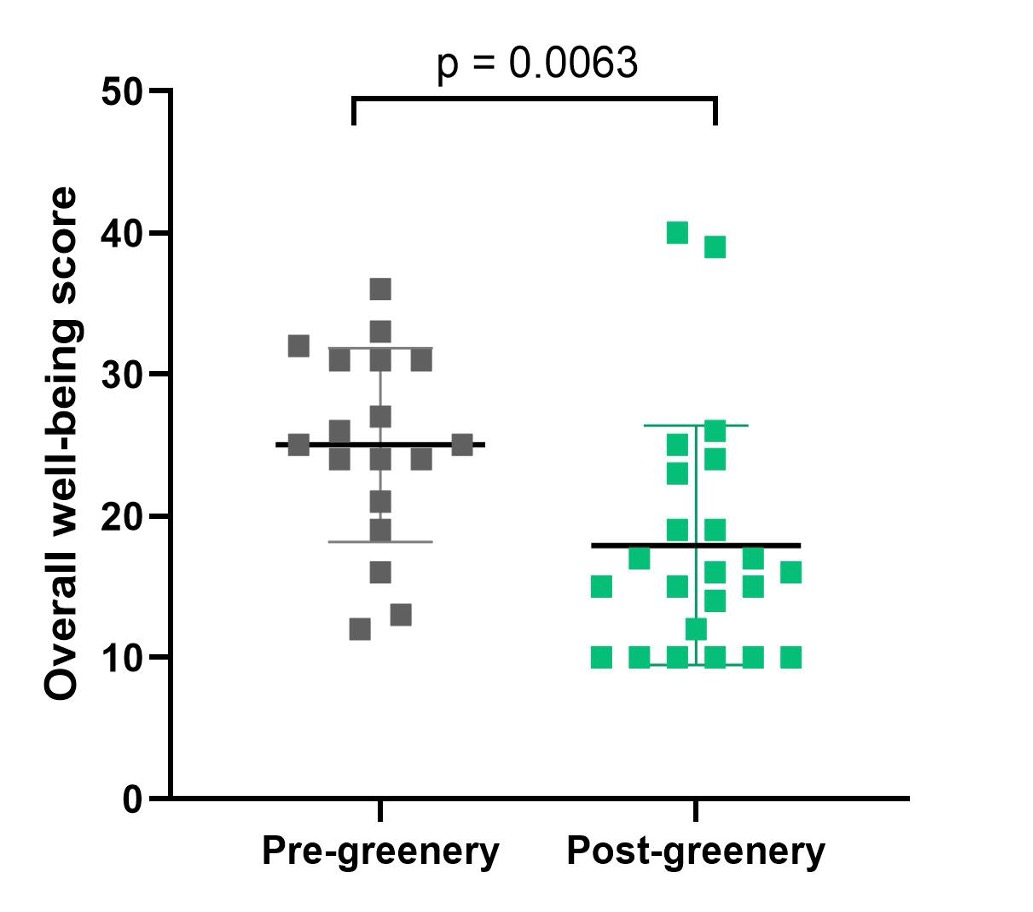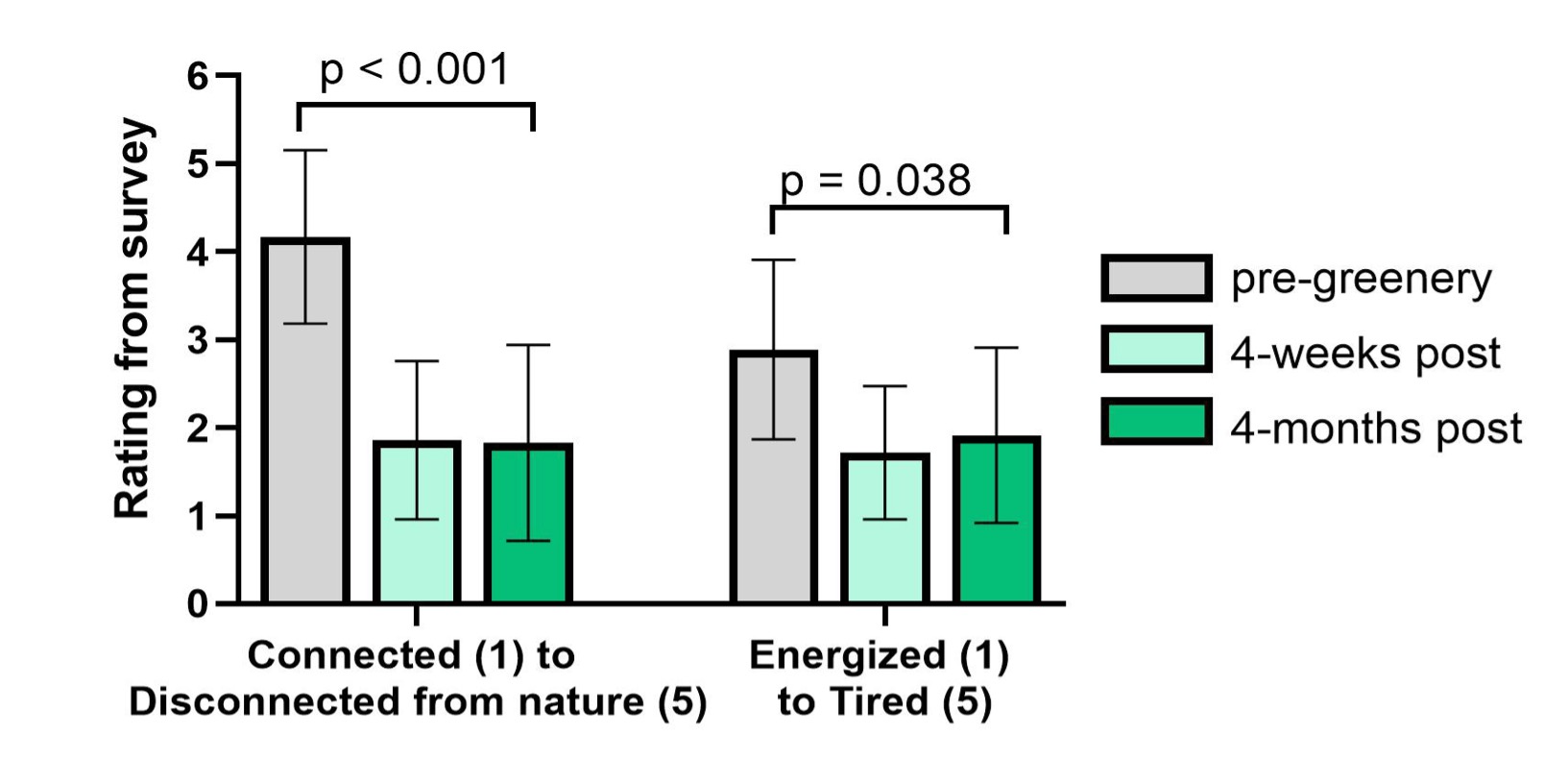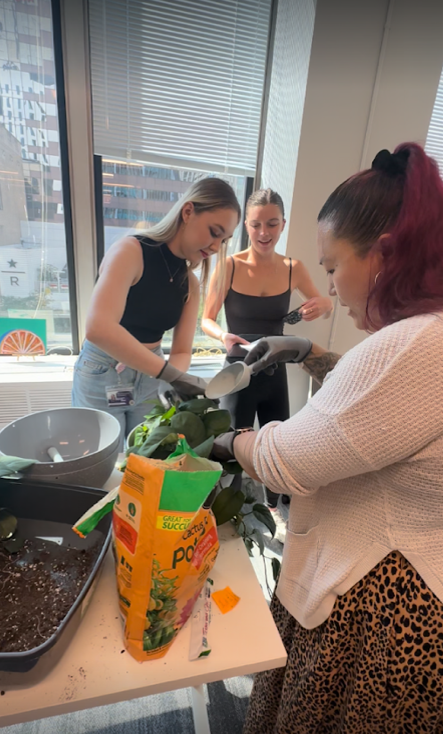Live Foliage Improves Overall Sense of Well-Being while in the CRS Suite
The presence of natural elements in our day-to-day, including in the workplace, benefits our health [1-3]. The presence of greenery boosts mood, enhances morale, reduces stress levels, and decreases the number of sick days taken [1, 4, 5]. Moreover, live plants can help alleviate workplace irritants such as dryness and noise. For example, plants can reduce dry eye, often caused by prolonged computer usage, through humidity regulation. Plants can also provide a sound barrier and reduce annoyance associated with office noise. The stress-reducing and mood-lifting qualities of plants are well-documented, contributing to physical and emotional well-being [1-5]. In terms of intellectual well-being, data are inconclusive on whether natural elements in the workplace can stimulate the mind and promote focused, innovative thinking [6, 7]. However, the natural ambiance can nurture a sense of interconnectedness among individuals, enriching their spiritual well-being and enhancing the overall sense of community [4].

1st year MS-RSM students Brianna Ramirez, Jenna Epstein, and Desiree Franklin (left to right) repotting plants in the CRS suite. Photo Credit: Rhianna Anglin, 1st year MS-RSM student.
The Center for Reproductive Science (CRS) administration recently received a $500 grant from the Northwestern University Human Resources Department to complete a well-being activity. To make the most of this opportunity, we organized a plant-arranging gathering to spruce up the communal CRS suite. By introducing natural elements into our workspace, we aimed to create a vibrant, welcoming environment that promotes a culture of mindfulness and fosters a sense of sustainability and connection with nature. We hypothesize that enhancing the CRS suite with natural elements will improve the physical space and increase overall well-being.
Methods: CRS members were emailed a well-being survey through Google Forms. A pre-greenery survey collected baseline views of the CRS suite. Following the plant activity, a four-week and four-month survey were administered. All surveys consisted of the same 10 questions on a 1 to 5 rating scale, with 1 being the most favorable and 5 being the least positive. We received 18, 7, and 23 responses for the pre-, four-week, and four-month surveys, respectively.
For statistical analysis, Cronbach's alpha test was used to assess the reliability of the survey results. This dataset had a high Cronbach’s alpha (1), which indicates the questions assessed the same concept and, therefore, can be pooled for an overall analysis (Figure 1). Unpaired t-tests were used to compare the pre-and four-month post-survey responses (Figure 2). All graphing and statistics were done with GraphPad Prism.

Figure 1. Pooled survey results show live foliage has a positive effect on overall well-being. The graph shows the sum of the responses to the 10 survey questions. The graph shows the mean ± the standard deviation.
Results: The goal of the plant activity and adding live foliage to the CRS suite was to positively impact these eight domains of well-being: physical, emotional, social, intellectual, environmental, spiritual, and vocational. Interestingly, the four-week post-greenery survey results show similar but stronger trends than the four-month post-greenery survey (most data not shown). However, these data were not analyzed using statistics due to limited responses to the four-week post-plant activity, so firm conclusions cannot be made.

Figure 2. Survey results on the effect of live foliage on people’s connection to nature and energy level. Each graph shows the mean ± the standard deviation for each survey question.
When all findings are combined, live foliage in the CRS suite significantly improves the sense of well-being (p = 0.0063; Figure 1). This finding remains significant (p = 0.0374) if the question regarding connection to nature is removed from the analysis (data not shown). Specifically, live foliage significantly increases how energized people feel in the CRS suite (p = 0.038) and helps people feel more connected to nature (p < 0.001; Figure 2). These findings support that live foliage positively impacts physical and environmental well-being.
Similar to other reports [6, 7], we did not detect a significant change in intellectual stimulation, social feelings, or inner balance. To interrogate the effect of live foliage on emotional well-being, participants were asked three questions related to feeling more comfortable/nervous, in a better/worse mood, and happy/upset while in the CRS suite. There was no significant difference in pre- and post-greenery responses. Regarding vocational well-being, data did not show a change in feeling more productive or more satisfied with the CRS suite.

2nd year MS-RSM students Taylor Hicks and Maddie Perry and DGP PhD student Tracy Zhou (left to right) prepping hanging plants in the CRS suite. Photo Credit: Rhianna Anglin, 1st year MS-RSM student.
Conclusion: In summary, these findings support that live foliage positively affects people's overall well-being and energy while in the CRS suite. As expected, people reported feeling more connected to nature with the addition of plants. Unfortunately, potentially due to the limited sample size, the data capture limited changes in people’s well-being. By incorporating greenery, we aspired to create a space that supports well-being and fosters a sense of community, innovation, and sustainability.
Acknowledgements: We thank Brenda J. Cude, PhD, for her assistance in designing the survey question and statistical test. We also thank the Northwestern University Human Resources Department for the well-being grant.
References
- Markevych I, Schoierer J, Hartig T, Chudnovsky A, Hystad P, Dzhambov AM, de Vries S, Triguero-Mas M, Brauer M, Nieuwenhuijsen MJ, Lupp G, Richardson EA, et al. Exploring pathways linking greenspace to health: Theoretical and methodological guidance. Environ Res 2017; 158:301-317.
- Stigsdotter UA. A Garden at your Workplace May Reduce Stress. The International Academy for Design and Health 2004.
- Lottrup L, Grahn P, Stigsdotter UK. Workplace greenery and perceived level of stress: Benefits of access to a green outdoor environment at the workplace. Landscape and Urban Planning 2013; 110:5-11.
- de Vries S, Hermans T, Langers F. Effects of indoor plants on office workers: a field study in multiple Dutch organizations. Front Psychol 2023; 14:1196106.
- Bjornstad S, Patil GG, Raanaas RK. Nature contact and organizational support during office working hours: Benefits relating to stress reduction, subjective health complaints, and sick leave. Work 2015; 53:9-20.
- Han KT, Ruan LW, Liao LS. Effects of Indoor Plants on Human Functions: A Systematic Review with Meta-Analyses. Int J Environ Res Public Health 2022; 19.
- Raanaas RK, Evensen KH, Rich D, Sjostrom G, Patil C. Benefits of indoor plants on attention capacity in an office setting. Journal of Environmental Psychology 2011; 31:99-105.